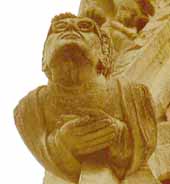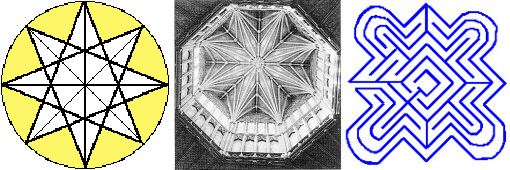The Publius Enigma
Ely Cathedral
OCTAGON / LANTERN: constructed on a 8-sides polygon. LANTERN: bring LIGHT in. OCTAGON: mathematical figure. ANGLES of 45°. Division of the CIRCLE. See also: the HOPEWELL OCTAGON in Newark, Ohio. Another link to the Hopewell Octagon Earthworks.
LABYRINTH: 215 feet long = 66 metres = height of the West Tower. A kind of RIDDLE or ENIGMA. Figure of EIGHT directions.
the SUNDIAL. (KAIRON GNOTHI: choose the timely moment, know the appropriate time). The DIVISION BELL = Sun/Moon DIAL. It is also about knowing the appropriate time...
GALILEE's PORCH: > link to GALILEO the Astronomer, inventor of the TELESCOPE? Related to the observation of the night sky and particularly of the MOON ?
GALILEE, an architectural term sometimes given to a porch or chapel which formed the entrance to a church. The name is said to be derived from the scriptural expression Galilee of the Gentiles (Matt. 1V. 15). Galilees are supposed to have been used sometimes as courts of law, but they probably served chiefly for penitents not yet admitted to the body of the church. The Galilee would also appear to have been the vestibule of an abbey church where women were allowed to seethe monks to whom they were relafed, or from which they could hear divine service.
Orientation: Pointing EAST, toward the rising sun.

Design of the Cathedral
The late 11th century design of Ely Cathedral was based on the proportional relationships of root 2. The master mason, almost certainly French, laid out the ground plan in six equal squares, three the length of the nave, one in each transept and one in the choir. The last three interlock at their corners in the middle of the crossing. The square is called the main vessel. All the other measurements in the building from the Romanesque period, both horizontal and vertical, are based on the root 2 proportional relationships of the main vessel. So, the main vessel is twice the width of the aisle, which is root 2 times the distance between the aisle responds, which is root 2 the depth of the piers which is root 2 the width of the arcade wall. In spite of alterations over the centuries the ground plan still has the original 11th century measurements.

